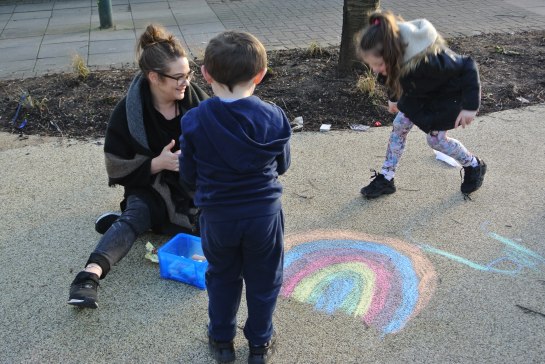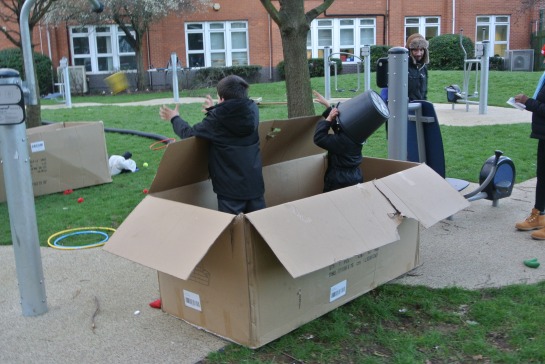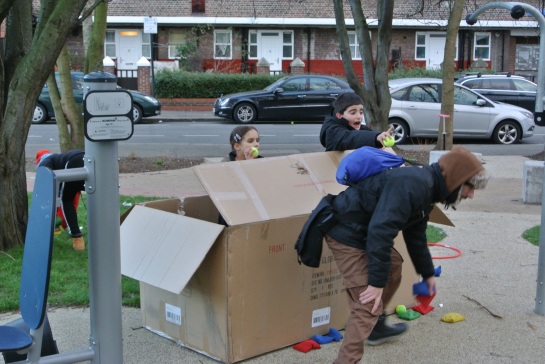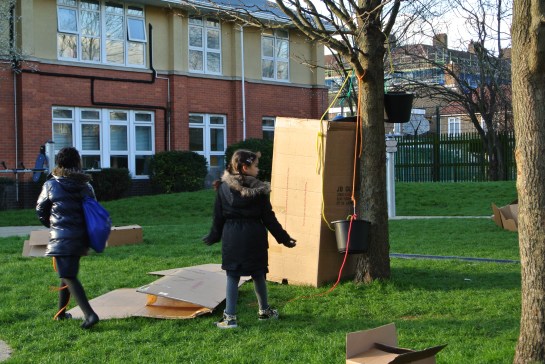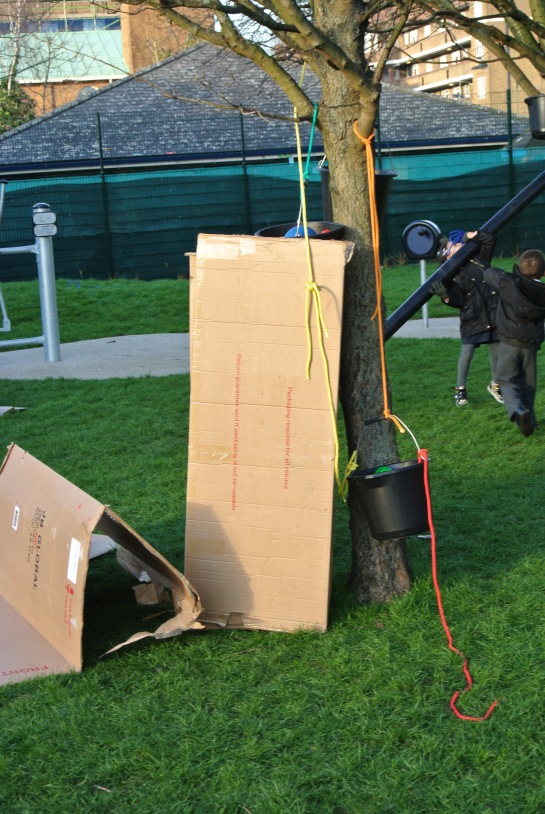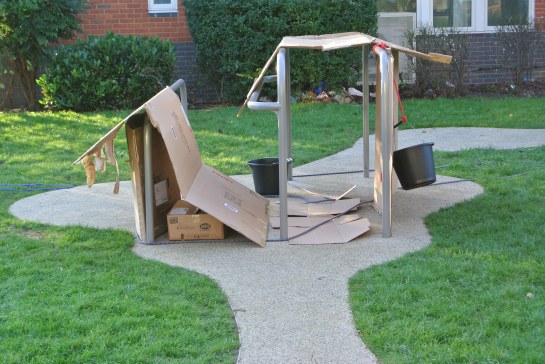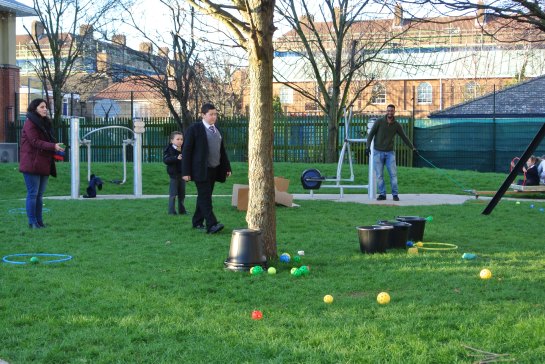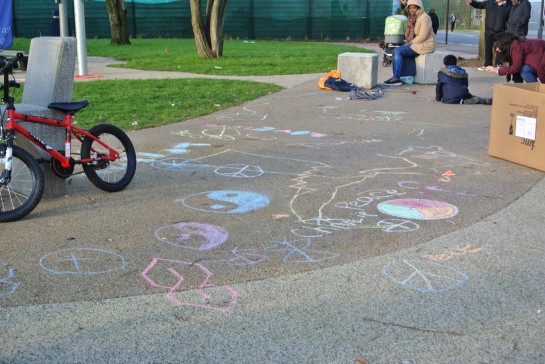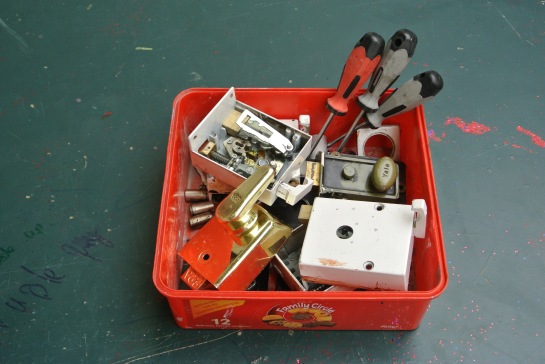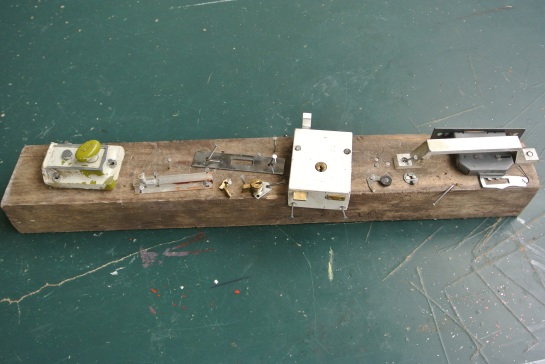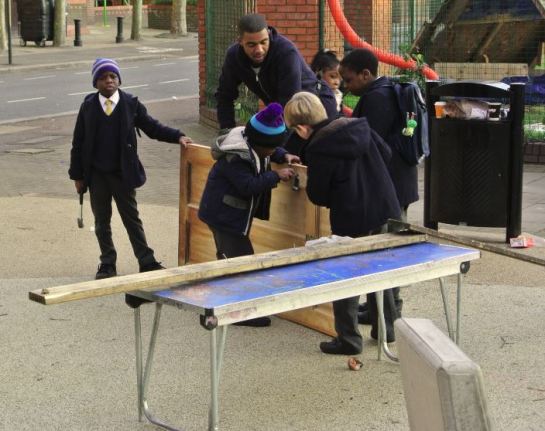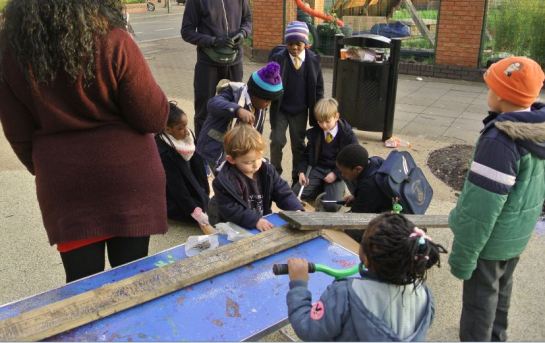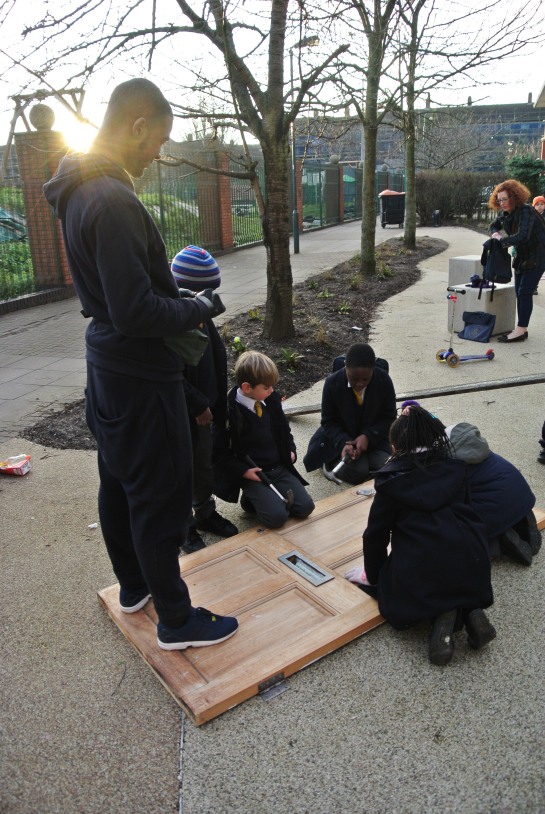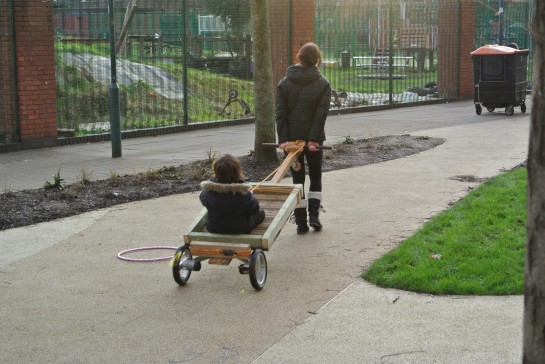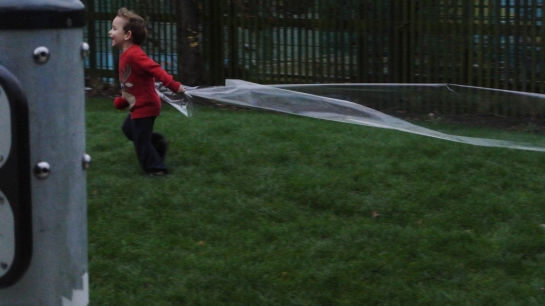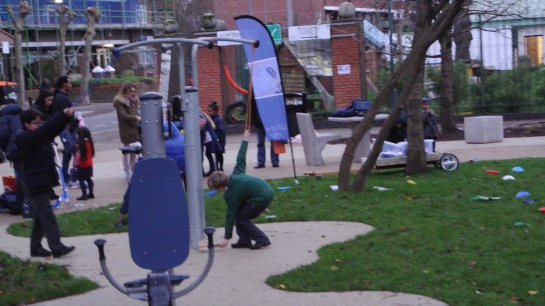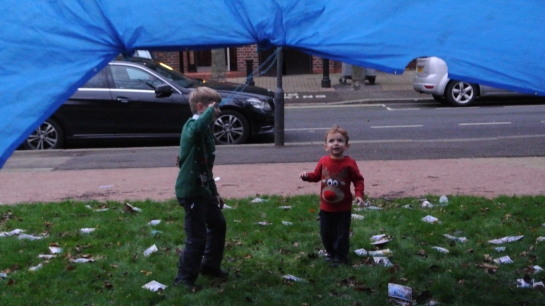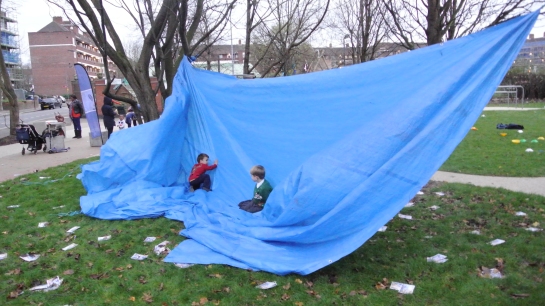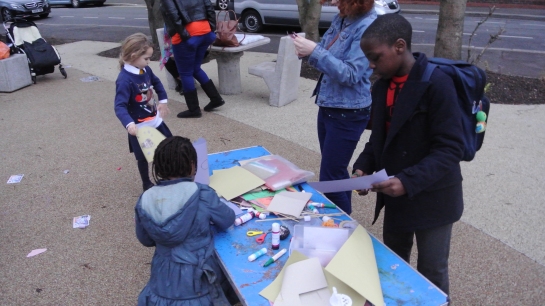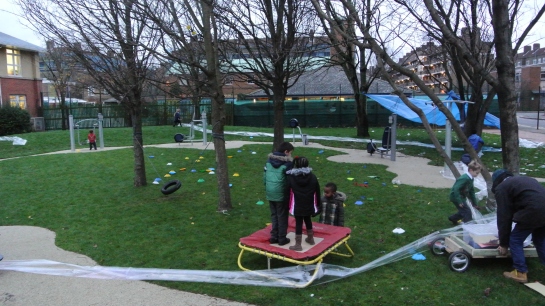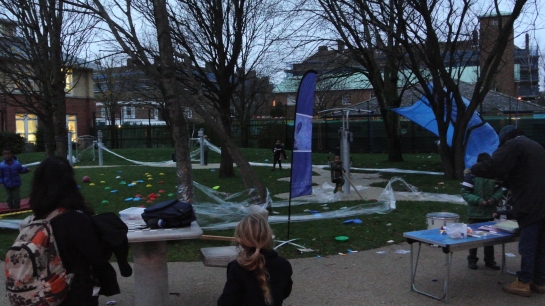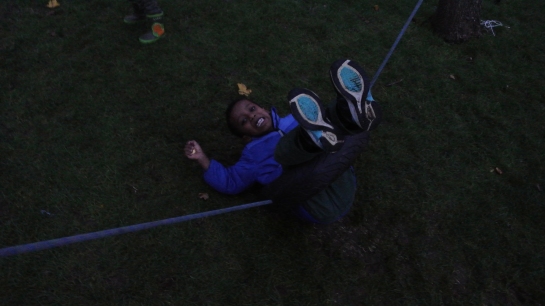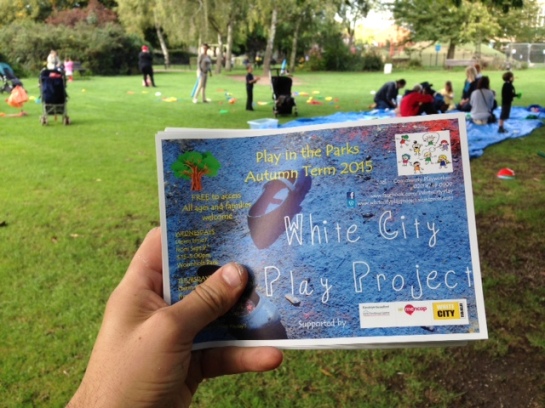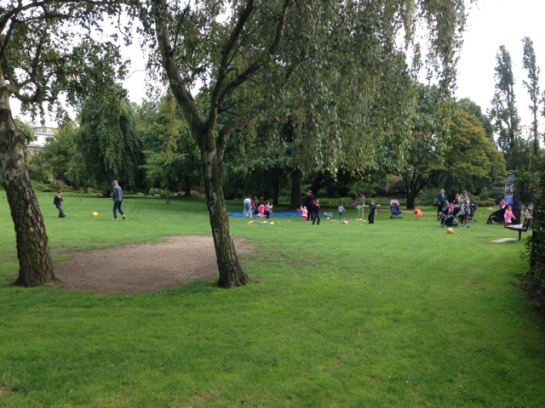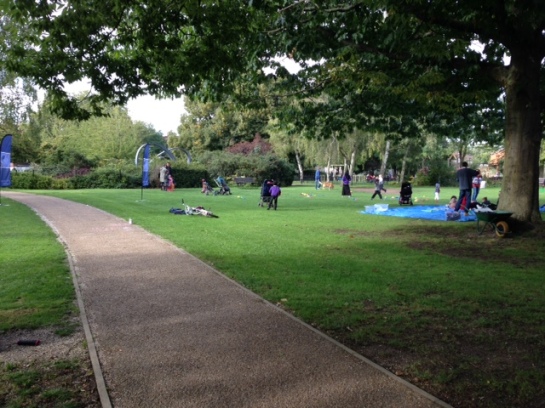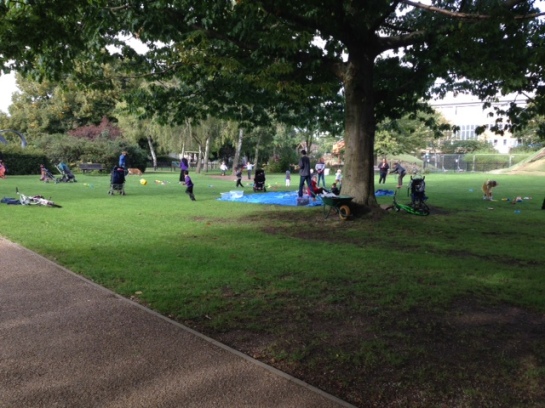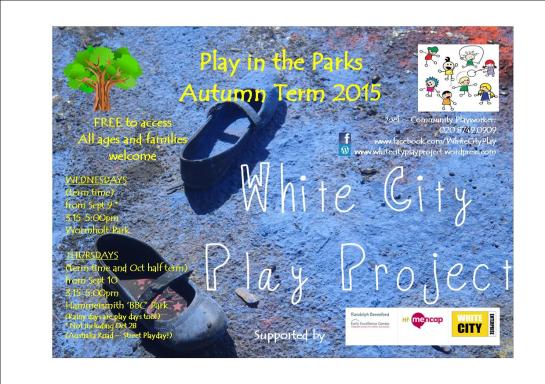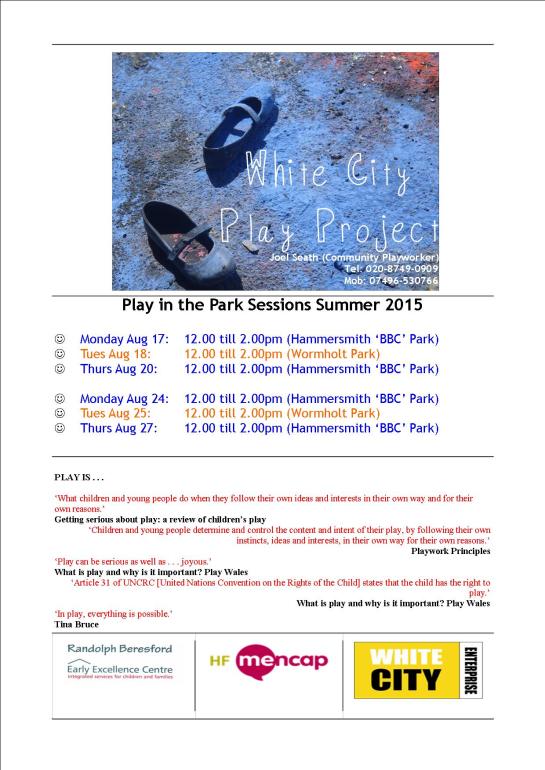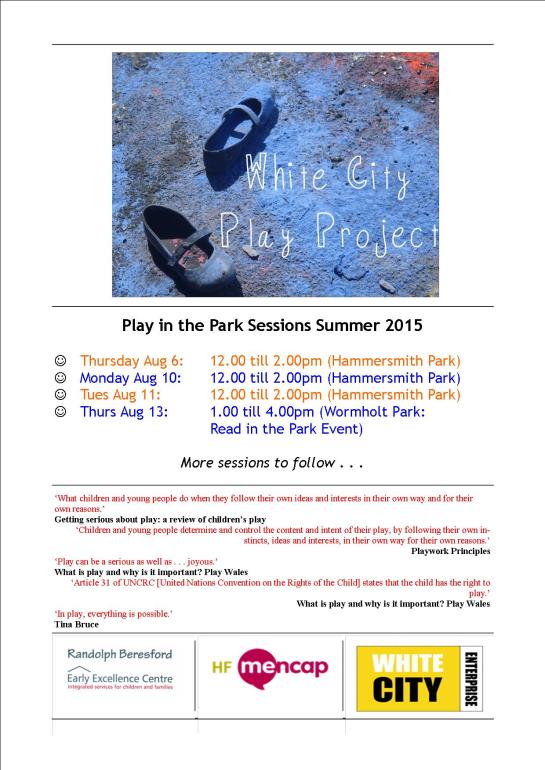Over the past few weeks, as 2016 has settled into gear, we’ve been lucky with the weather at outreach play sessions. This has contributed to a good, strong turn-out each time we’ve been out and about, but it’s not the only reason: it’s a real privilege to see the growing play community taking shape. Parents talk with other parents, make observations of play to us, and support the play of their children and others’ children. We see plenty of friendly, familiar faces returning for session after session (children and adults too!) and play has filled the patch of green . . .
Playworkers and parents, and children themselves, pull others around on the trolley (which was just a device to transport stuff, but then became a daily car or train or way to get around!) There’s always a crowd around the art stuff (glitter and glue and beads and paper and sticks and feathers, and so on). Parents and children are discovering, for the first time (or re-discovering), the joys of plasticine! We’ve tried to introduce some new elements every session: a long flexi-tube, pink hammocks, some guttering, some car tyres. What gets played with stays another day. What doesn’t get played with for a while may be brought back at a later date: re-thought about in any case.
What has been played with plenty lately are boxes and buckets (both of which can be many things) and chalk (which, when we tidy away, often leaving the place tidier than when we found it, stays on the paving for a few days till it rains: a message of ‘play was here’). Here is a flavour of play:
We found some big old boxes that once held sofas, which became forts for ball and beanbag battles (as well as ‘how many of us children can fit in a box?’ and ‘what happens if we stand in a big box and lean over?’)
Buckets and ropes and boxes found themselves converted into engineered systems, on trees and fixed equipment . . .
We’re reminded of the playwork thinking of ‘compound flexibility’, where ‘flexibility in the play environment leads to increased flexibility in the child. That child is then better able to make use of the flexible environment, and so on.’ (Brown, 2003) . . .
So, the more the environment can be changed by the child, the more the child is able to create ideas and be confident; the more that ideas and confidence take shape, the more the environment can be changed, and so on. All from just a few buckets and ropes and boxes!
Of course, buckets can be used for many things (as crash helmets when riding the trolley, as armour in big box beanbag battles, as steps to reach the hula hoops in the branches, hung in trees just to see if beanbags can be thrown in there, or simply as targets on the ground).
What if all the ground were played on? Just think: what if all the city’s streets were this colourful . . .
Reference:
Brown, F. (2003), Compound flexibility: the role of playwork in child development in Brown, F. (Ed) (2003), Playwork: theory and practice. 1st ed. Buckingham: Open University Press.
